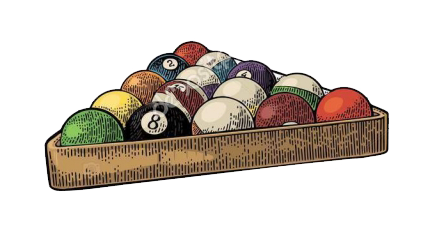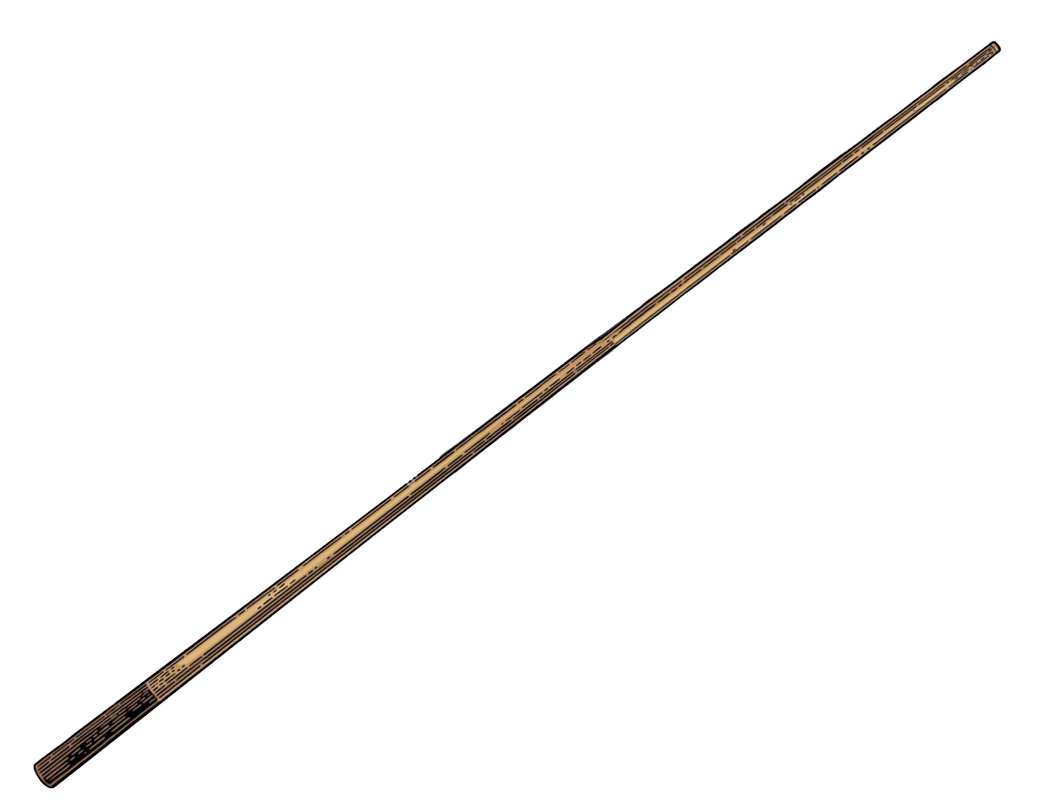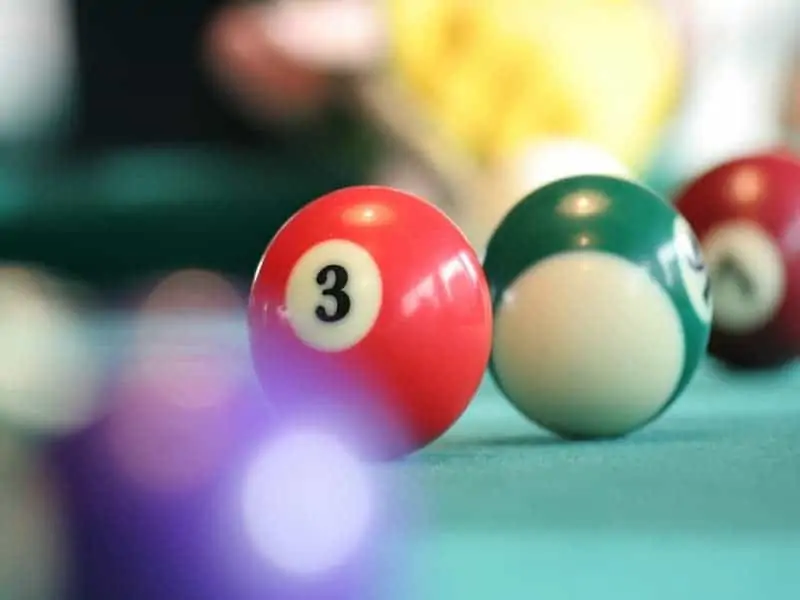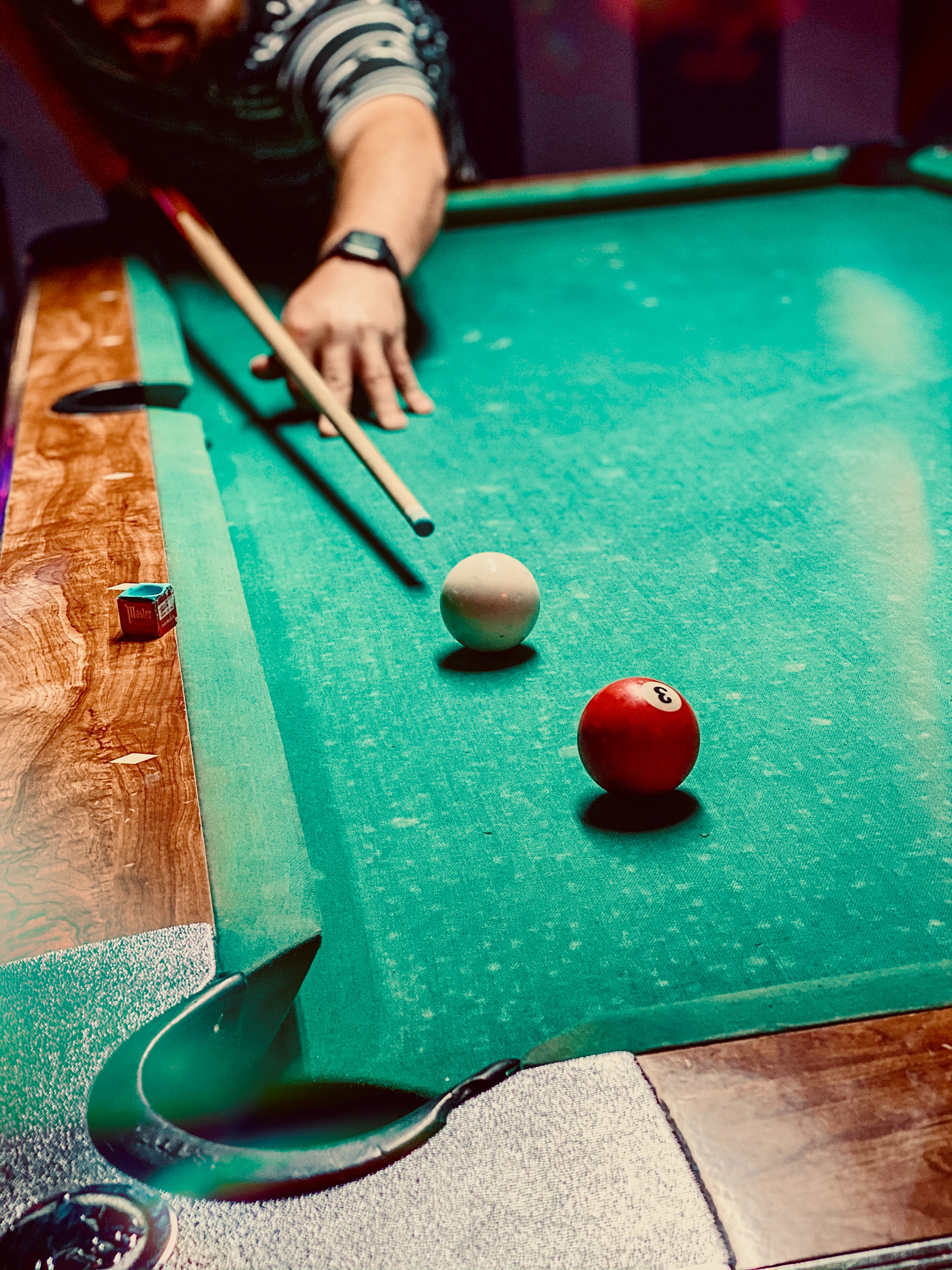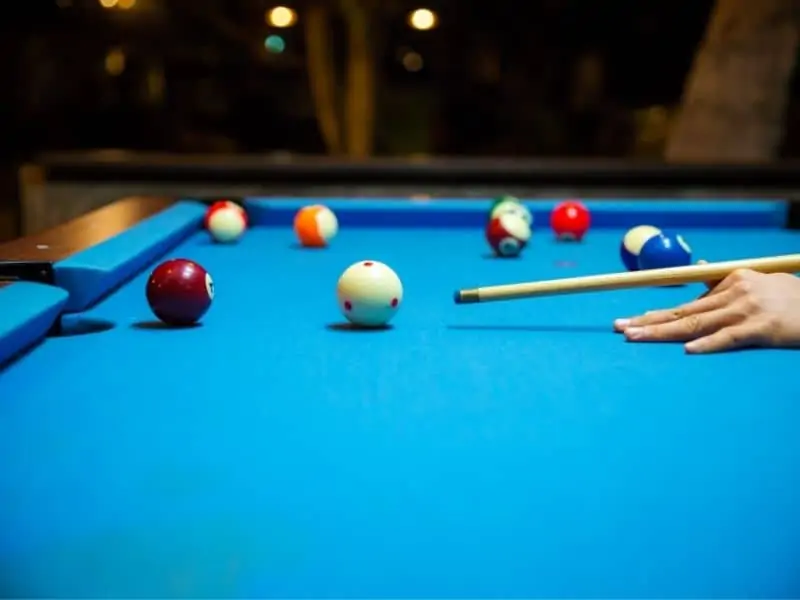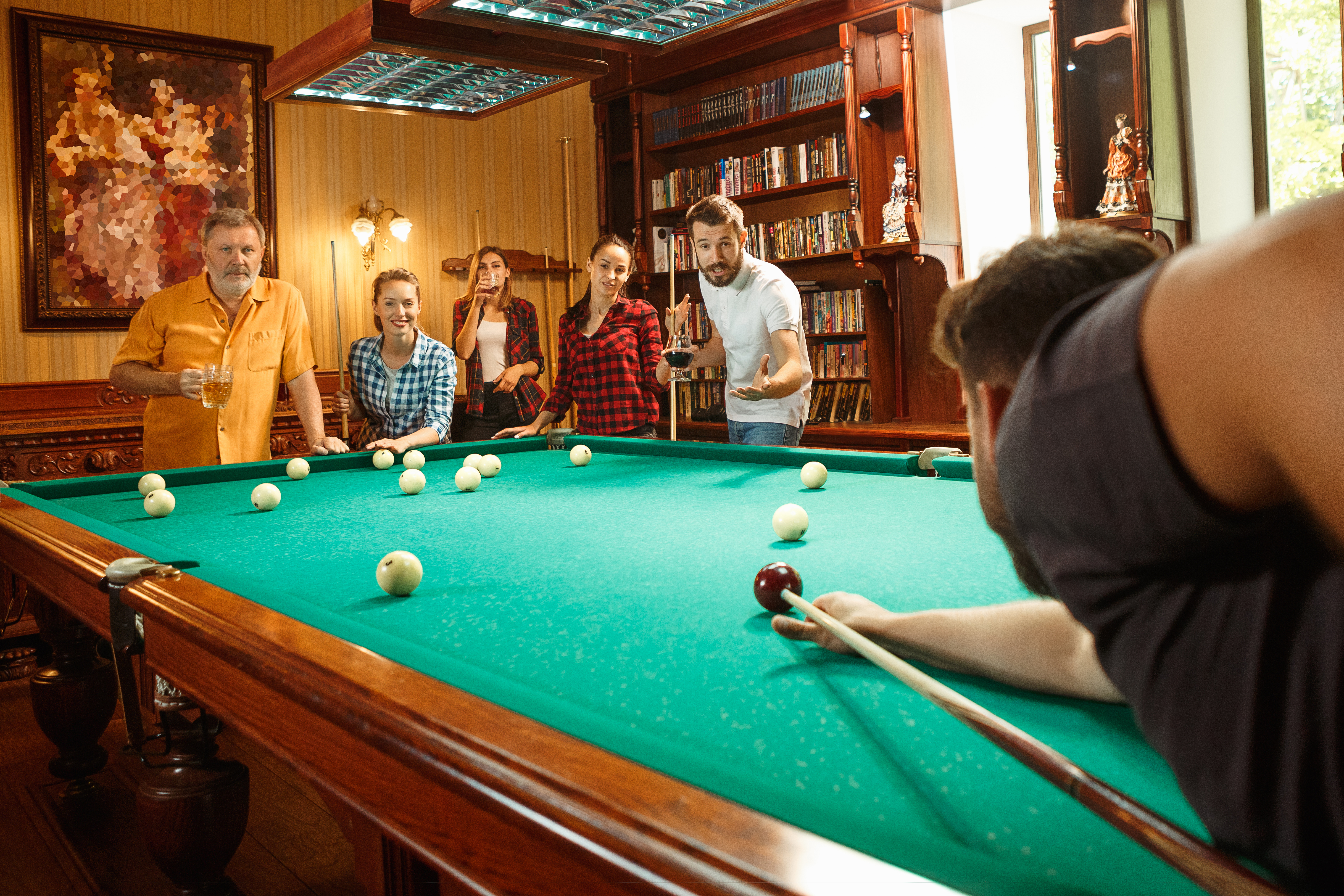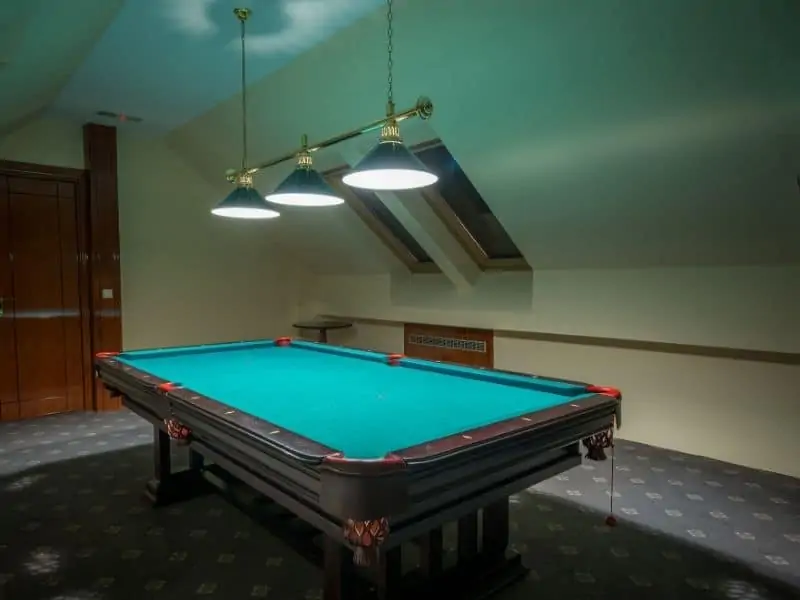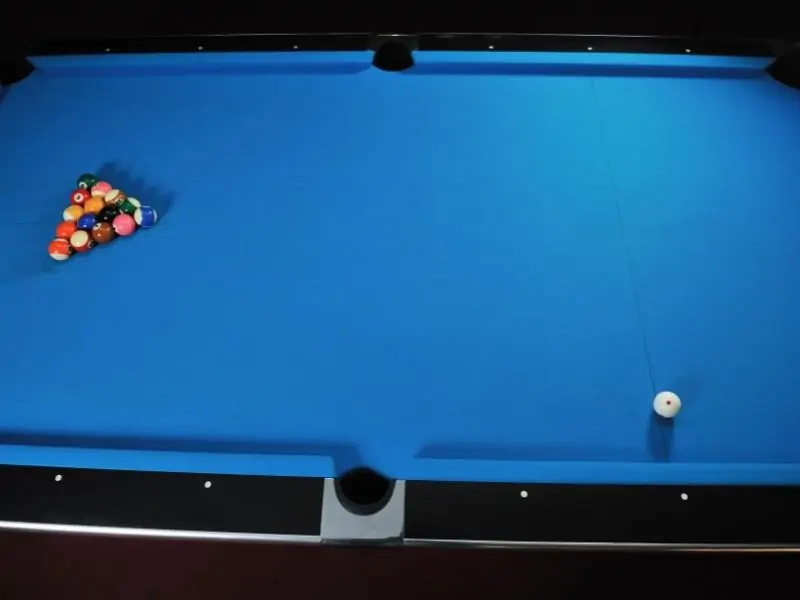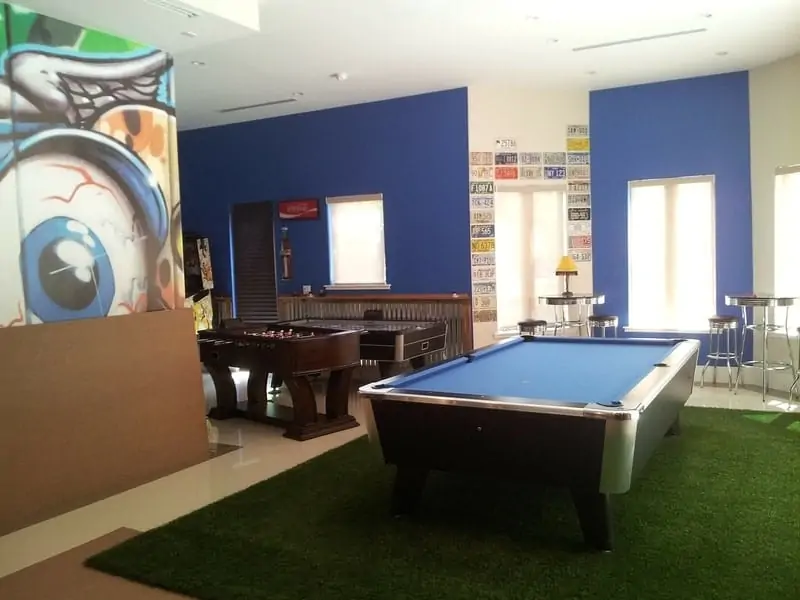One of the harder things that I’ve had to deal with as a pool player is the feeling that I won’t have enough time to finish whatever game I start. Sure, I would love to start a game of 8-ball but I have only so much money in my pocket and table time isn’t free.
Luckily, there is a version of pool that can be won right from the break! Its name? 3-ball. In this article I’m going to show you how to play 3-ball, the rules you’ll need to know, and anything else that might come in handy so that you can enjoy one of the fastest versions of pool played around the world.
3-Ball Basics
If you’re familiar with how to play 8-ball or 9-ball, learning 3-ball won’t be too difficult. 3-ball is a form of pocket billiards, meaning that the objective of the game is to put the balls into the different pockets on the table. However, I will say that 3-ball has more in common with 9-ball than 8-ball, in the sense that the balls do need to be pocketed in a specific order after the break.
But what makes 3-ball different from 9-ball and 8-ball and why do we need a whole article talking about it?
One of the differences is that the game only uses four balls total between the cue ball and the three object balls. For simplicities sake I’m just going to recommend that players use the 1, 2, and 3 ball when they play.
The second difference is that the way to win the game is not based on being the last person to pocket a particular ball, but to be the person who can pocket all three balls with the fewest amount of shots. 3-ball is a lot like golf in that the more points you have the worse you’re doing because you could have theoretically done the same thing in less attempts.
The last difference between 3-ball and its sister games is that players take turns and do not use the same rack. For example, I would rack the 3-balls, break, and then pocket the remaining balls.
The next person would also rack, break, and pocket their balls. We would just see who was able to pocket the balls in the fewest attempts. Don’t worry though because I’m going to break all of that down, starting with how to rack properly.
Racking 3-Ball
A good rack in billiards requires not only the correct placement of the balls onto the table, but also the removal of as much dead space between the balls as possible. In an ideal rack the balls should be so close to each other that a hair would have a hard time going between them. Ideally, every ball in the rack should be touching.
When racking 3-ball, the 1-ball should be placed at the head position, with the 2-ball and 3-ball behind it forming a small triangle. Some online retailers sell small racking triangles made specifically for 3-ball but a stand triangle will do just fine.
So now that you have a nice tight rack in place you can actually start playing the game.
How to Play andKeep Score in 3-Ball
One of the benefits of3-ball is that since both players are not using the same rack, neither player is at a particular disadvantage if the other one goes first. So deciding who goes first can be as simple as saying “after you”, or flipping a coin.
As with pretty much any form of pool, you’re going to start by putting the cue ball behind the head string on the table. It doesn’t matter where you put it, as long as it’s behind the head string. Some players like to do it from the sides so that they hit the rack from an angle.
A very big difference between 3-ball and pretty much any other version of pocket billiards is that when a player breaks the balls do not have to touch the sides of the table. If a player breaks gently and the balls only move a little, that is perfectly fine. Being that the one who breaks is still going to be shooting, its pretty good motivation to break soundly.
After the break the player of that round will then attempt to make in all the balls in order of lowest to highest with the goal to be to pocket those balls in the least amount of shots as possible.
This is why the balls not touching the sides of the table on the break is not a negative like in other games, because for a lot of 3-ball players getting a ball in on the break is part of their strategy.
Keeping score is as simple as adding one point every time the cue ball is struck with the cue. This includes any time the player does not pocket a ball on a hit, accidentally scratches or commits a foul.
Fouls in 3-Ball
To make things easy I’m just going to bullet down what counts as a foul in the game of 3-ball:
- Hitting the cue ball off the table.
- Getting a double hit on the cue ball. A double hit is any time you accidentally touch the cue ball after the first initial contact, it’s very common when the cue ball is close to another ball.
- Any push shots. As the name implies, it’s any time a player uses their stick to push the ball instead of strike it.
- Any form of illegal movement to the cue ball or the object balls using either the hands or the end of the cue stick.
- All forms of illegal jump shots as defined by the general bylaws of pocket billiards. A common one is a scoop shot, which is how most people accidentally jump balls.
It is important to note that if a scratch of any kind occurs, the player who scratched will take the cue ball and place it behind the head string on the same side of the table that they broke from. 3-Ball players often do not like playing with ball in hand as it’s seen as rewarding the player for a mistake.
Just to review let me go over the scoring again. If I were to play and I break and make all the balls in on the break, I would get one point. One point is the lowest score possible in the game of 3-ball.
A more likely scenario is that I break and maybe one or two balls go in on the break, if that happens I would add a point for every shot I have to take to pocket a ball. So if I break and make one ball in on the break and then I need two more shots to finish my round then I would get a score of three for my round as long as I also didn’t foul in the process, because every foul would add one point.
How Do MostPlayers Do It?
Due to the quick nature of 3-ball, most people who play the game like to do a system where the winner of a specific number of rounds is the one who wins the whole game. For example if two players were playing a best of three, whichever player had the lowest score on two separate rounds would be the one to win the entire game.
Additional Ways to Keep Score
Three ball can be played with more than two people. As the rounds do not rely on a single rack or the taking of turns, it’s possible for any number of people to have turns and play for the best score. The only real downside to this is that games take longer and there are more scores to keep track of with a higher likelihood of a tie.Don’t worry though, because there are methods to account for this.
One of the ways that people increase the pace of the game is by setting a cut-off score for how many attempts someone can have during their turn. For a lot of experienced players they’ll set the cut-off somewhere between 3-5 points, which makes sense considering an experienced 3-ball player knows how to consistently pocket either one or two balls on the break.
Now in regards to less experienced players, the cut-off isn’t as important. I recommend playing a couple of turns and then figuring out on average how many attempts you need to get the ball in, and then setting the cut off to be one or two points higher than that average.
As for if a round ends in a tie, there are a couple of different ways of doing it. If there are only two players in the game and the rounds keep ending in a tie, then the two player swill simply play until someone wins. It’s a straight-forward solution that can sometimes lead 3-ball games to take much longer than either party wishes. If there are more than two players that keep tying, then the game will continue until the players drop out one by one.
Friendly Wagering: Spice Up the Game
3-ball already offers an exciting and fast-paced experience, but if you want to add an extra layer of fun, why not introduce a friendly wagering system? Here’s how you can do it:
Making the Pot
Each player involved puts $1 (or any decided amount) into a pot before the game begins. The aim? To clear the 3-ball game the fastest and win the entire pot. It’s a simple way to bring extra excitement and a competitive edge to the game without breaking the bank.
The Rules
- Starting the Wager: Before the game begins, each player puts $1 into the pot.
- Winning Conditions: The player who clears the 3-ball in the fewest shots wins the pot.
- Tie Breaker: In case two or more players clear the game with the same count, everyone pays another $1 into the pot and starts a new round. This continues until there is a clear winner, and the stakes grow higher with each tie!
- Friendly Play: Remember, the main goal here is to add excitement to the game and not to create tensions between friends. Make sure everyone is comfortable with the wager and set clear rules from the beginning.
The Benefits
- Increased Excitement: Adding a wager makes every shot more thrilling, knowing that a prize awaits the winner.
- Skill Showcase: The friendly competition allows players to push themselves and show off their skills.
- Social Interaction: Wagering in a group brings a new social dimension to the game, creating camaraderie and encouraging friendly banter.
Conclusion
If you’re ever looking for a fast paced version of pool that you can play with multiple people, then 3-ball is the game for you. Its fun, quick, and easy to learn. Its also a great game to play if you’re tired of playing the same ol’ billiard games you always play.
Adding a wagering system to a 3-ball game can make an already thrilling game even more exciting. Whether it’s just a friendly game among pals or a more intense competition, it brings a new dimension to the classic game of 3-ball. Just remember, the key is to keep it friendly, enjoyable, and within everyone’s comfort level. Enjoy the game, may the best player win the pot!
Other Articles You May Be Interested In
- How To Play Bank Pool: Its So Much Fun
- How to Play Pool by Yourself: 9 Pool Games You Can Play Alone
- What is a Sneaky Pete Pool Cue?
- Best Beginner Pool Cues Under $100
- 3 Player Pool Games You’re Sure to Love
